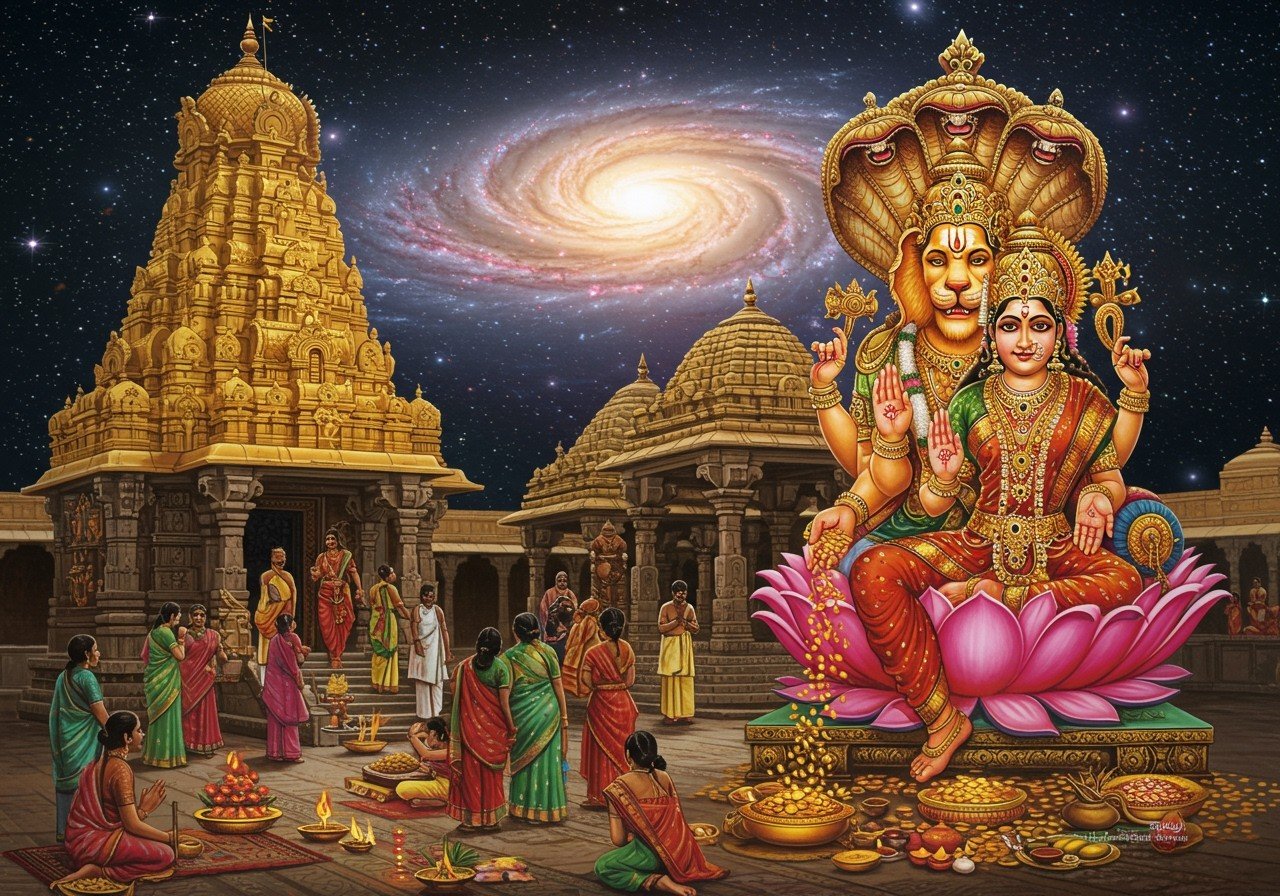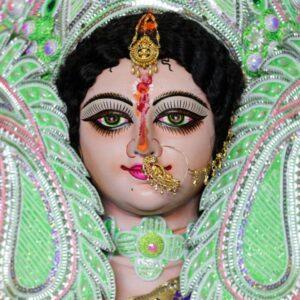
The Lakshmi Narasimha Temples hold a special place in Hindu mythology and are cherished by devotees for their historical and spiritual significance. This article delves into the key aspects that make these temples unique, including their origins, architectural wonders, rituals, and enduring legacy in Hindu tradition. Understanding the story of Lakshmi Narasimha, the fourth avatar of Lord Vishnu, provides a deeper appreciation of these sacred sites.
Mythological Background of Lakshmi Narasimha
Lord Narasimha, the fourth incarnation of Lord Vishnu, appeared as a half-man, half-lion to vanquish the demon king Hiranyakashipu and protect his devotee Prahlada. This divine act symbolizes the triumph of good over evil and showcases the protective nature of the divine. The presence of Lakshmi, the goddess of wealth and prosperity, alongside Narasimha emphasizes the balance of power and abundance. This narrative holds profound significance in Hinduism, offering invaluable spiritual lessons.
Historical Significance and Spread of Temples
Lakshmi Narasimha temples boast a rich history across India, deeply influencing the culture. Construction of these temples spans from the early medieval period to modern times, with key locations concentrated in Andhra Pradesh, Tamil Nadu, and Karnataka. Various dynasties, including the Cholas and Vijayanagara Empire, patronized these temples, contributing significantly to their unique architectural styles. Notable temples like the Ahobilam Narasimha Swamy Temple play a vital role in regional history and continue to be important pilgrimage sites.
Architectural Marvels
Lakshmi Narasimha temples are renowned for their architectural splendor and intricate carvings, showcasing Dravidian and Vesara styles. These architectural wonders incorporate:
- Use of specific materials like granite, lending strength and durability to the structures. The choice of granite also reflects the regional geology and availability of resources.
- Detailed carvings and sculptures adorn the temple walls, depicting scenes from mythology and showcasing the skill of the artisans. These intricate details bring the stories to life and add to the temple’s spiritual aura.
- Symbolic designs representing religious themes, enriching the spiritual experience for devotees. These symbols often convey deeper meanings and philosophical concepts related to the deity.
Notable examples include the Simhachalam Temple, the rock-cut architecture at Hampi, and the richly carved pillars at Devarayanadurga temple.
Rituals and Festivals
Rituals performed at Lakshmi Narasimha temples are central to their significance. Daily worship includes special pujas and active community involvement, fostering a sense of belonging and shared faith. Major festivals like Narasimha Jayanti and Brahmotsavam are important events in the Hindu calendar. These festivals feature elaborate processions, vibrant cultural performances, and enthusiastic participation by devotees, strengthening community bonds and preserving ancient traditions.
Symbolism and Iconography
The iconography of Lakshmi Narasimha is rich with symbolism. Typical representations include:
- Ugra Narasimha (the wrathful form): Symbolizing the protective and fierce aspect of the deity, ready to vanquish evil and defend his devotees. This form depicts Narasimha’s power and his swift action against injustice.
- Lakshmi Narasimha (the peaceful form with Lakshmi): Representing the harmonious blend of power and prosperity, signifying the blessings of both protection and abundance. This form emphasizes the balance between the divine’s strength and the nurturing aspect of Lakshmi.
Symbols like the lion’s face and human body convey deeper messages about protection, divine power, and the balance between the earthly and spiritual realms.
Poojn.in: Your Source for Lakshmi Narasimha Puja Items
Planning to perform Lakshmi Narasimha puja? Poojn.in offers a wide variety of items to enhance your worship experience. Find Lakshmi idols, incense, diyas, and more. Visit poojn.in today to explore our collection.
Conclusion
Lakshmi Narasimha temples occupy a significant place in Hindu mythology, history, and culture. They serve as powerful reminders of the victory of good over evil and the divine protection embodied by Lord Narasimha. These temples, with their breathtaking architecture and rich rituals, connect us to our spiritual heritage and traditions. The festivals and daily pujas nurture the community spirit, providing opportunities to celebrate our faith collectively. Visiting these sacred places allows us to honor the balance of power and prosperity symbolized by Lakshmi Narasimha, finding both peace and inspiration in their divine presence.
FAQs on Lakshmi Narasimha Temples
What makes Lakshmi Narasimha temples unique? Lakshmi Narasimha temples are unique for their dedication to a specific form of Vishnu, emphasizing both protection and prosperity. They often feature distinctive architecture and iconography related to Narasimha’s half-man, half-lion form.
What is the significance of Narasimha Jayanti? Narasimha Jayanti celebrates the appearance day of Lord Narasimha. It is a major festival observed with special pujas, fasting, and storytelling of the Narasimha legend.
Why are Lakshmi Narasimha temples important for devotees? Devotees visit these temples seeking divine protection, blessings for prosperity, and spiritual solace. The temples provide a sacred space for prayer, reflection, and connection with the divine.
Explore more about Hindu deities and rituals on poojn.in. Read our blog posts on Lord Ganesha’s avatars, Goddess Lakshmi, and the significance of Aarti.

